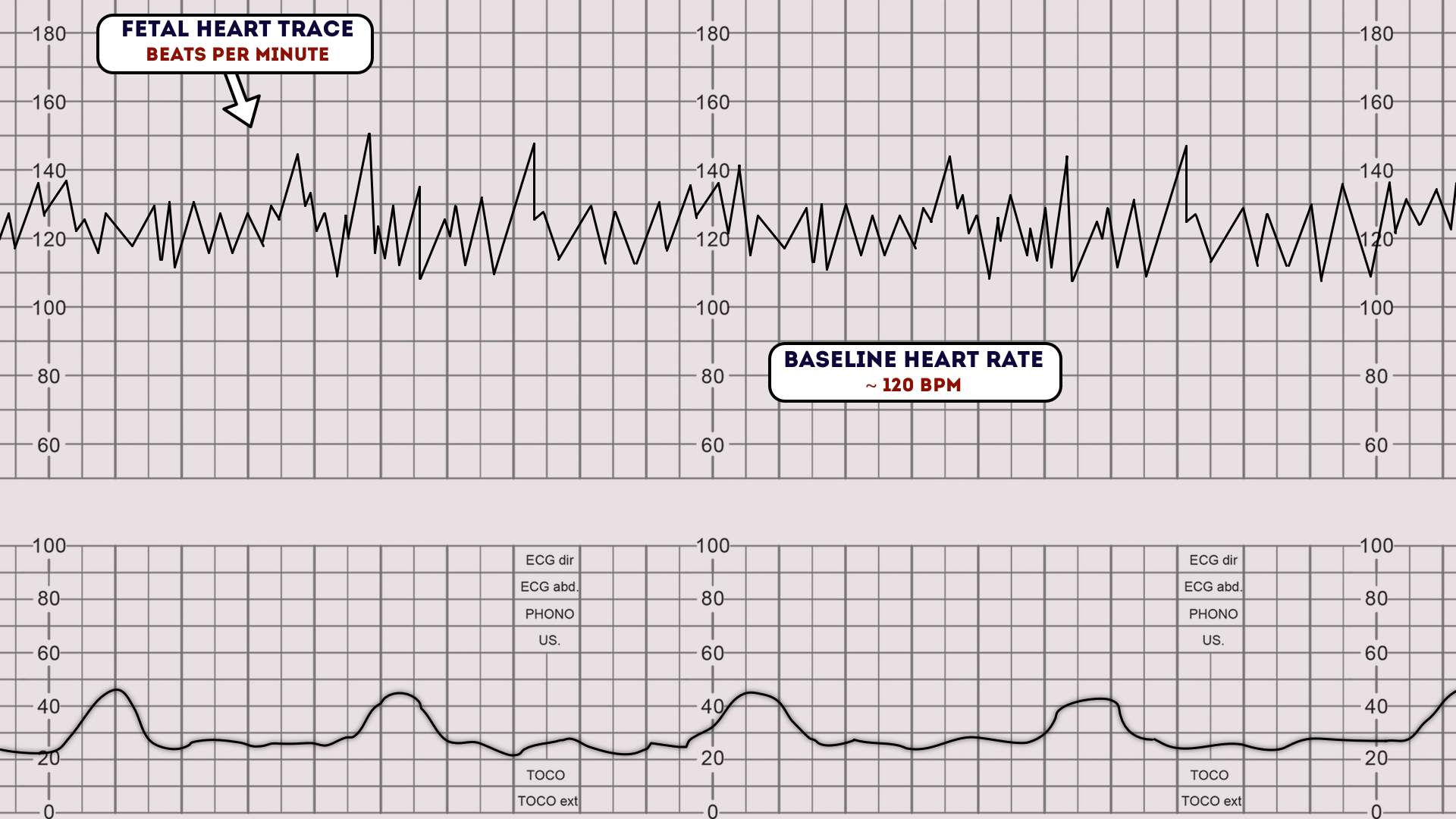
Abnormal Fetal Heart Rate. The normal heart rate for a fetus is anywhere between 120 and 160 beats per minute. Cesarean delivery rate for abnormal fhr. Tachyarrhythmia which is when the fetal heart rate is going faster than normal ectopic rhythm which is when the heart rate sounds as though it is skipping beats or there are extra beats typically fetal heart rate for a fetus is supposed to sit anywhere between 120 and 160 beats per minute. However the odds are in your favor that you ll have a healthy baby.

Fetal heart rate decelerations in supine position may disappear in the lateral position level of evidence 3. Cesarean delivery rate for abnormal fhr. Fetal heart rate was above the 95th centile of the normal range in 10 67 and 52 of fetuses with trisomy 21 trisomy 13 and turner syndrome respectively. Fetal heart rate monitoring fetal brain monitoring brain monitors and responds to extrinsic influences intrinsic influences homeostatic interactions between the fetus and the environment goal maintain optimal blood flow oxygenation. Unfortunately an abnormal fetal heart rate can indicate a heart condition or a miscarriage in process. In prophylactic maternal oxygenation administration abnormal cord blood ph values less than 7 2 are more frequent in the oxygenation group than in the control group level of evidence 2 and its efficacy in fetal distress is not evaluated until now.
The fetal heart rate was below the 5th centile in 30 of fetuses with triploidy and 19 of those with trisomy 18.
Fetal arrhythmia is a term that refers to any abnormality in the heart rate of your baby. The fetal heart rate was below the 5th centile in 30 of fetuses with triploidy and 19 of those with trisomy 18. Fetal heart rate was above the 95th centile of the normal range in 10 67 and 52 of fetuses with trisomy 21 trisomy 13 and turner syndrome respectively. Unfortunately an abnormal fetal heart rate can indicate a heart condition or a miscarriage in process. Fetal heart rate decelerations in supine position may disappear in the lateral position level of evidence 3. It is measurable sonographically from around 6 weeks and the normal range varies during gestation increasing to around 170 bpm at 10 weeks and decreasing from then to around 130 bpm at term.